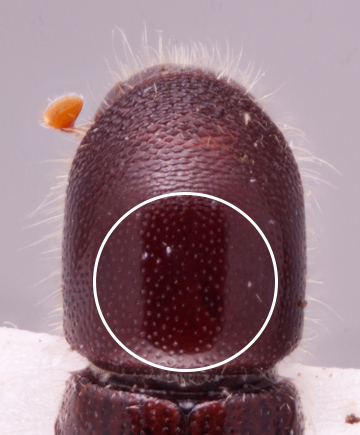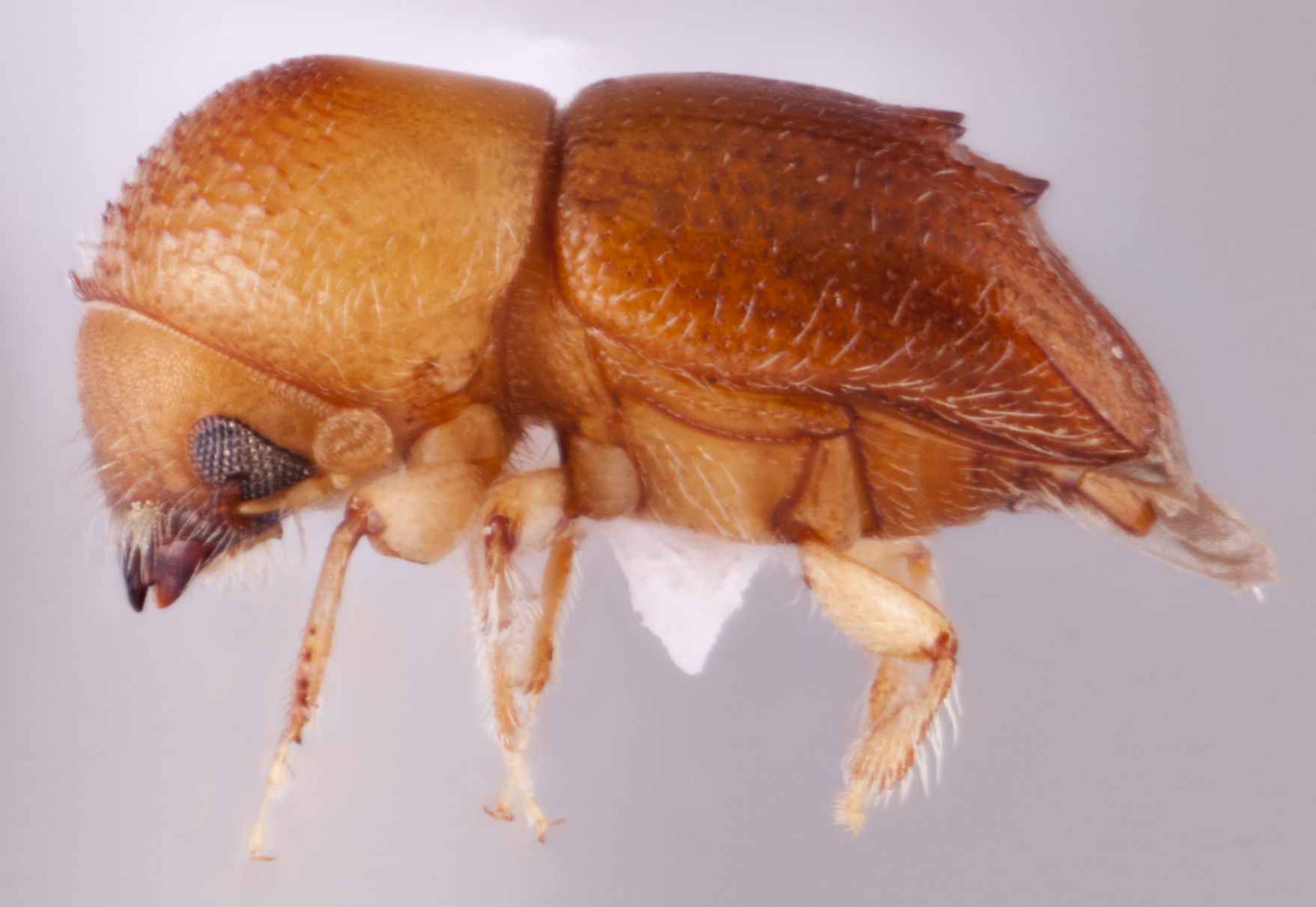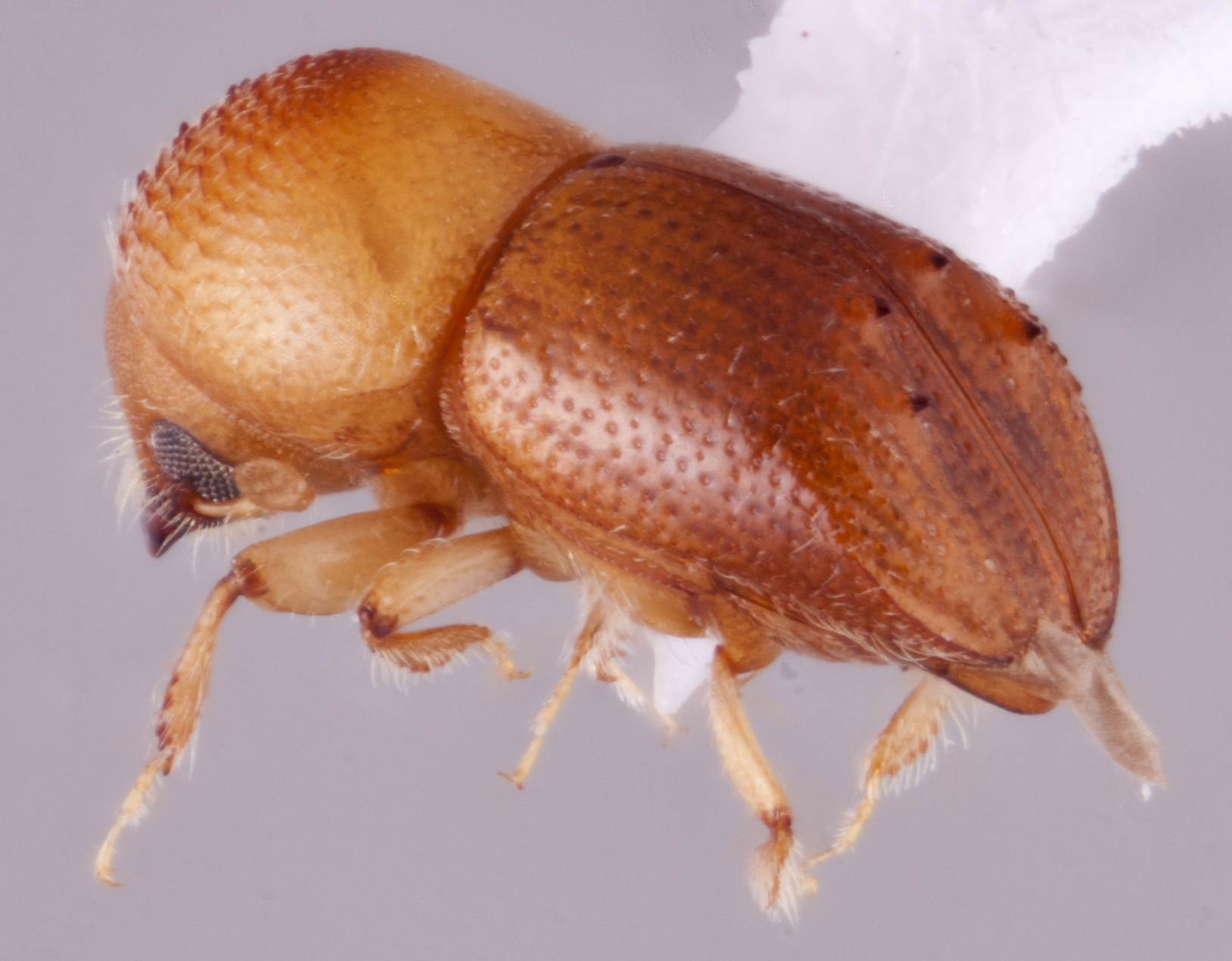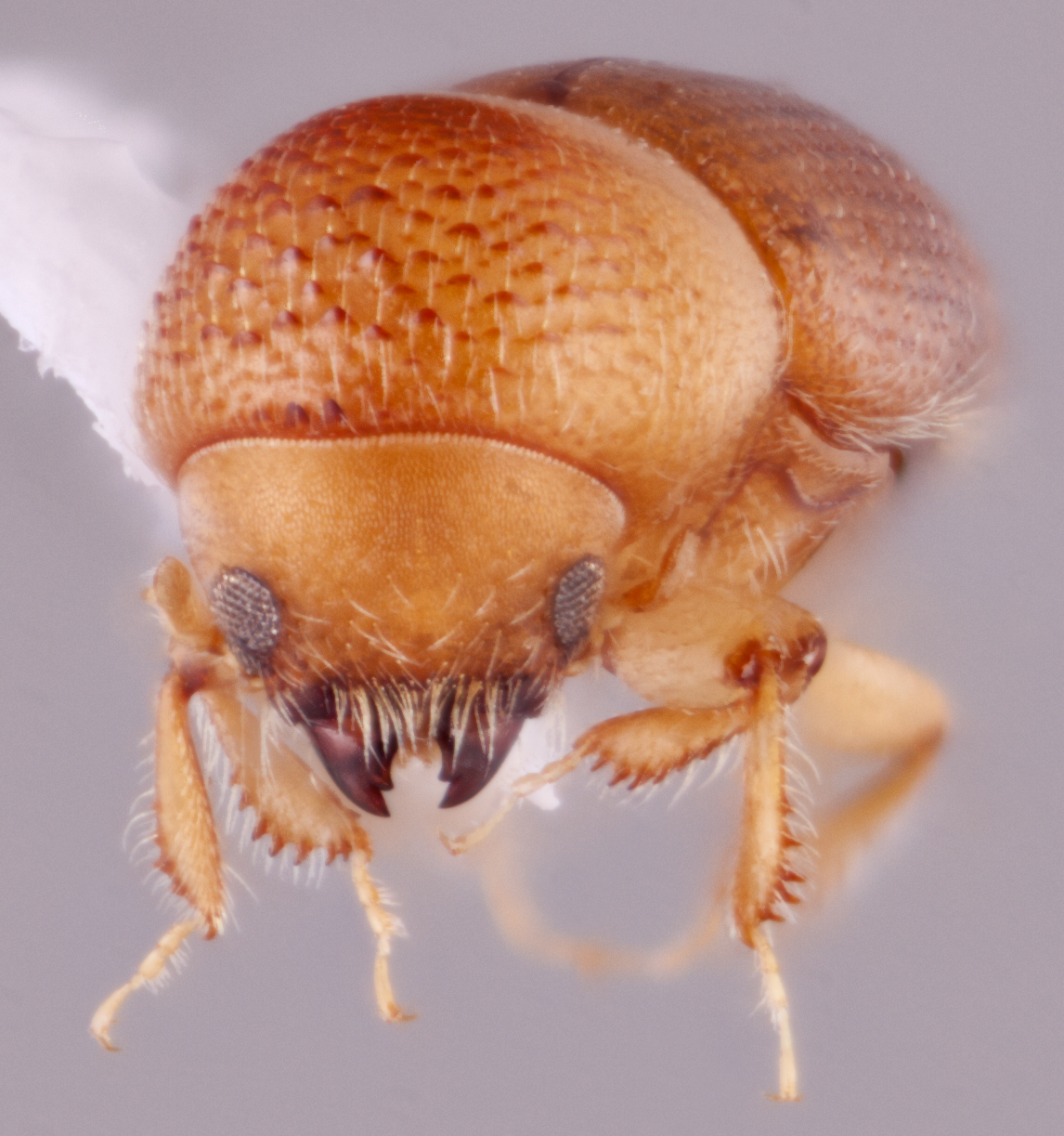Diuncus haberkorni
|
Diuncus haberkorni lateral; R.K. Osborn |
|
Diuncus haberkorni dorsal; R.K. Osborn |
|
Diuncus haberkorni declivity; R.K. Osborn |
|
Diuncus haberkorni frontal; R.K. Osborn |
Taxonomic history
Xyleborus haberkorni Eggers, 1920: 43.
Diuncus haberkorni (Eggers): Hulcr and Cognato, 2009: 31.
Synonyms
Xyleborus approximatus Schedl, 1951a: 77. Hulcr and Cognato, 2013: 80.
Xyleborus taichuensis Schedl, 1952b: 64. Beaver and Liu, 2010: 26.
Xyleborus potens Schedl, 1964a: 298. Synonymy: Schedl 1975e: 35 (as synonym of X. approximatus).
Diagnosis
1.9−2.8 mm long (mean = 2.28 mm; n = 5); 2.11−2.38 times as long as wide. This species can be distinguished by the elytralelytral:
pertaining to the elytra
summit armed by two pairs of large denticlesdenticle:
a small tooth, the sides of which are equal and the tip is above the middle of the base , one pair on interstriaeinterstria:
, one pair on interstriaeinterstria:
longitudinal spaces along the elytra between the striae, which is not as<br />
impressed and bear smaller punctures.
 2 and the other on interstriaeinterstria:
2 and the other on interstriaeinterstria:
longitudinal spaces along the elytra between the striae, which is not as<br />
impressed and bear smaller punctures.
 3; pronotumpronotum:
3; pronotumpronotum:
the dorsal surface of the thorax
about as long as wide, summitsummit:
highest point, used for pronotum and elytra, denotes the peak between pronotal frontal slope and disc, and between elytral disc and declivity at midpoint, basalbase:
at midpoint, basalbase:
point or edge closest to the body; opposite of apex half punctatepunctate:
half punctatepunctate:
set with fine impressed points, appearing as pin pricks
 ; declivitydeclivity:
; declivitydeclivity:
downward slope of either the pronotum or elytra
 appearing weakly bisulcatebisulcate:
appearing weakly bisulcatebisulcate:
pertaining to an elytral declivity with two suci; a sulcus present on each elytron but the suture remains convex
; and interstriaeinterstria:
longitudinal spaces along the elytra between the striae, which is not as<br />
impressed and bear smaller punctures.
 1, 3−6 flat to weakly convexconvex:
1, 3−6 flat to weakly convexconvex:
appearing rounded giving the declivitydeclivity:
giving the declivitydeclivity:
downward slope of either the pronotum or elytra
 a finely sculptured appearance.
a finely sculptured appearance.
May be confused with
Diuncus mucronatus, D. mucronatulus, and D. quadrispinulosus
Distribution
Bangladesh, China (Fujian, Guangdong, Guangxi, Hainan, Hong Kong, Jiangxi, Yunnan), India (Andaman Is, Assam, Arunachal Pradesh, Tamil Nadu, Uttarakhand, West Bengal), Indonesia (Java), Japan (Ryukyu Is), East & West Malaysia, Nepal, New Guinea, South Korea, Sri Lanka, Taiwan, Thailand, Vietnam. Imported to Africa (South Africa, Tanzania)
Host plants
Polyphagous (Beeson 1930Beeson 1930:
Beeson CFC. 1930. The biology of the genus Xyleborus , with more new species. Indian Forest Records 14: 209-272., Browne 1961bBrowne 1961b:
Browne FG. 1961b. The biology of Malayan Scolytidae and Platypodidae. Malayan Forest Records 22: 1-255.). The species is sometimes associated with other xyleborines (Beaver and Browne 1978Beaver and Browne 1978:
Beaver RA, Browne FG. 1978. The Scolytidae and Platypodidae (Coleoptera) of Penang, Malaysia. Oriental Insects 12: 575-624. https://doi.org/10.1080/00305316.1978.10432538, Hulcr and Cognato 2010bHulcr and Cognato 2010b:
Hulcr J, Cognato AI. 2010b. Repeated evolution of theft in fungus farming ambrosia beetles. Evolution 64: 3205-3212. https://doi.org/10.1111/j.1558-5646.2010.01055.x), but may also occur alone (Hulcr and Cognato 2009Hulcr and Cognato 2009:
Hulcr J, Cognato AI. 2009. Three new genera of Oriental Xyleborini (Coleoptera: Curculionidae: Scolytinae). Zootaxa 2204: 19-36. https://doi.org/10.11646/zootaxa.2204.1.2).
DNA data
Sequences available for COI and CAD.





